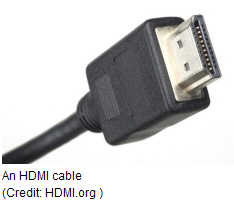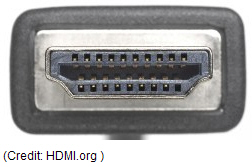簡單咁講, 佢只係傳送 010101 信號. 一係有, 一係無. 無分好壞.
Right now you can buy a 6-foot-long HDMI cable for $3.50. Or
$19.99. Or $99.99. Or $699.99.
Salespeople, retailers, and especially cable manufacturers want you to believe
that you'll get better picture and sound quality with a more expensive HDMI
cable.
They're lying. You see, there's lots of money in cables. Your
money.
Dozens of reputable and disreputable companies market HDMI
cables, and many outright lie to consumers about the "advantages" of their
product.

Worse, the profit potential of cables is so great, every retailer
pushes high-end HDMI cables in the hopes of duping the buyer into spending tens,
if not hundreds, of dollars more than necessary.
Here's the deal: expensive HDMI cables offer no difference in
picture quality over cheap HDMI cables. CNET has mentioned
this before,
but here's the science of why.
The signal
The first thing to understand is what's transmitted over the
cable in the first place. HDMI uses Transition
Minimized Differential Signaling,
or TMDS.
TMDS has two basic aspects. The first is that the ones and zeros
at the source (a Blu-ray player or HD cable/satellite box) are not exactly the
ones and zeros your TV uses to create a picture -- at least, not in exactly the
same order. Before sending the signal out via the HDMI output, the ones and
zeros are rearranged to minimize how many transitions there are. So instead of
10101010, the transmission may look like 11110000. If you really like math, how
it does this is cool,
but it's not really important to understanding the concept as a whole.

ven though this conversion is weird, it makes it much more likely
that the data transmitted can be rebuilt on the other end (as in, at the
display).
The second part of TMDS (the DS part) is the HDMI cable itself.
Each HDMI cable is actually multiple small, copper wires. Two versions of the
data are sent over different wires. One of these is out
of phase with
the "real" signal. The TV receives all the data, puts the out-of-phase signal
back in phase, then compares it to the "real" signal. Any noise picked up along
the way will now be out of phase, and as such it is effectively negated and
ignored.
If you're an audio person, this is similar to how balanced
(XLR) cables work.
TMDS works really well, allowing for short cables and fairly long
cables to carry what is a pretty intense amount of data. It also means you can
have inexpensive cables that work just as well as expensive ones.
More important to our discussion, it means that when something
goes wrong, it goes really wrong. It's often said that with an HDMI signal, you
either get everything and it's perfect, or it isn't perfect and you get nothing.
In fact, I've said
this. If you're getting an image that looks correct, and there are no dropouts
in the audio or video, then you're getting everything that's being sent. If the
cable is faulty, or it's a really long run with an under-built cable, most of
the time you'll just get nothing. No picture at all.


